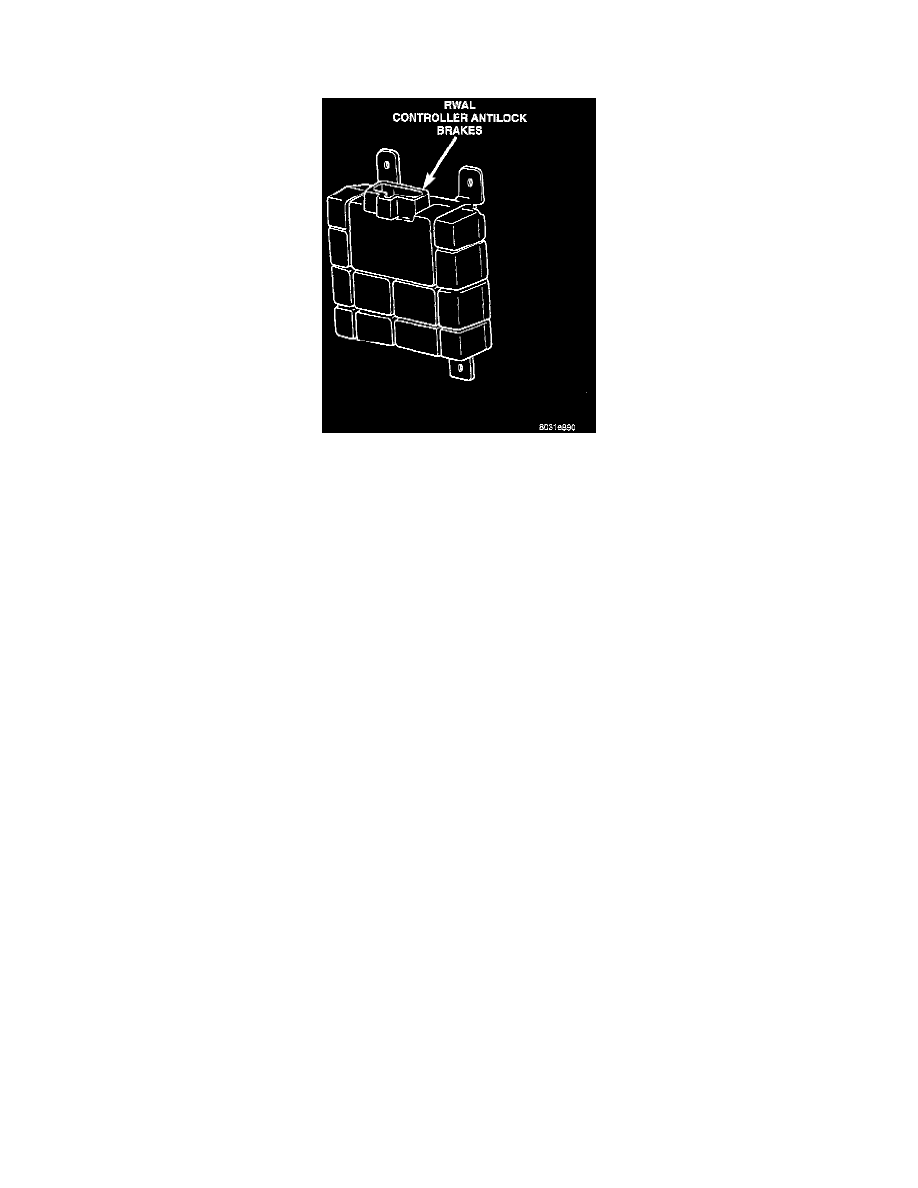RAM 2500 Truck 4WD V10-8.0L VIN W (1997)

Electronic Brake Control Module: Description and Operation
With Rear Wheel Antilock Brakes
RWAL CAB
GENERAL INFORMATION
The Controller Antilock Brakes (CAB) is a micro-processor which monitors and controls the ABS brake system operation. It has a 14 terminal
connector to deliver power and ground to the CAB and connect all inputs and outputs associated with the ABS system. The CAB primary
functions are:
^
Detect wheel locking tendencies.
^
Control the application of brake fluid pressure to the rear brakes during antilock braking.
^
Monitor the Rear Wheel Antilock (RWAL) brake system for proper operation.
^
Perform self-check diagnostics.
The CAB continuously monitors the speed of the differential ring gear by monitoring signals generated by the rear wheel speed sensor. The CAB
determines a wheel locking tendency when it recognizes the ring gear decelerating too rapidly. When a wheel-locking tendency is detected, the
CAB energizes the isolation solenoid in the RWAL valve. When the isolation solenoid is energized, hydraulic pressure cannot be increased to the
rear wheel cylinders. If the rear wheel speed sensor still indicate that the ring gear is decelerating too rapidly, the CAB then energizes the dump
solenoid to reduce pressure at the rear wheel cylinders. The CAB continues this action until the wheel-locking tendency no longer exists. When a
fault is detected, the CAB will generate and store diagnostic trouble codes. Only one code can be stored at any one time. If the CAB senses a fault
in any one of its monitored circuits, it will illuminate the red brake warning and ABS warning lamps. It will then generate a Diagnostic Trouble
Code (DTC) and store it in memory. In general, the diagnostic trouble code will remain in memory when the ignition key has been turned OFF.
The exception to this is codes 9 and 11 which are erased any time the key has been turned OFF. Also, code 11 will be removed from memory
when the ignition is in the RUN or ACC. positions if the malfunction that caused the code has been eliminated. For both codes 9 and 11, if the
malfunction remains, the DTC will be reset on the next ignition key cycle to ON.
CAB INPUTS
The CAB monitors the following inputs to determine when a wheel locking tendency may exists:
^
Rear Wheel Speed Sensor
^
Brake Lamp Switch
^
Brake Warning Lamp Switch
^
Reset Switch
^
4WD Switch
CAB OUTPUTS
The CAB controls the following outputs for antilock braking and brake warning information:
^
RWAL Valve
^
ABS Warning Lamp
^
Brake Warning Lamp
POWER SUPPLY AND GROUND
Ignition voltage is provided to the CAB through pin 3 and is protected by a 20 amp fuse. Ignition voltage is supplied when the ignition switch is in
the RUN or ACC. positions. The CAB requires ignition voltage to be able to operate the function of antilock brakes. Battery voltage is provided to
the CAB through pin 9 and is protected by a 20 amp fuse. This circuit supplies power to the memory cells so that the CAB can retain diagnostic
